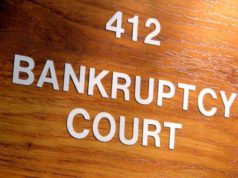
Following the acceptance of a debtor as a bankrupt party under a specific chapter of Title 11 of the U.S. Code, and prior to the finalization of bankruptcy proceedings, a bankruptcy plan must be formulated, brought before creditors and the court, and confirmed. Plans must include all known creditors and must be agreed upon all parties within reason. Therefore, a case cannot move forward without a bankruptcy plan. Furthermore, even if the plan itself is the most critical element of the confirmation process, the bankruptcy court forms associated with the development of a plan are not to be overlooked themselves.
There are, indeed, multiple relevant bankruptcy court forms involved relating to a bankruptcy plan. Again, as hinted, these forms are somewhat simplistic, but quite necessary. Some notes on the various bankruptcy court forms that are applicable to the bankruptcy plan stages of filing for bankruptcy:
As it expressly states, Form B-13, the Order Approving Disclosure Statement and Fixing Time for Filing Acceptances or Rejections of Plan, Combined with Notice Thereof specifically addresses the need of the court to approve a disclosure statement, yet another one of the bankruptcy court forms that a corporate debtor almost certainly will come across in its journeys through bankruptcy court.
Likewise suggested by the long-form title, B-13 would set critical dates in the bankruptcy plan confirmation process, namely the date by which acceptance/rejection of the plan by outsiders can be made known, when the confirmation hearing is to be held, and the last day to file objections after the plan is confirmed. Form B-15, meanwhile, is a separate document confirming the plan set forth by the petitioning party.
As with Form B-13, the Order Confirming Plan must be signed by a bankruptcy court judge, and will likewise almost certainly involve the acceptance of a Chapter 11 business reorganization scheme. You probably noticed that neither of the above bankruptcy court forms invoke a great deal of debtor/creditor participation in their economy of language. The B-13 and B-15 bankruptcy plan petitions are essentially fill-in sheets for the judge to sign and therefore are chiefly administrative forms.
On the other hand, the B-14 Ballot for Accepting or Rejecting Plan is wholly contingent on the active involvement of creditors to make sure their interests are being represented. In truth, it is a form designed to vote on a plan. Though it likely goes without saying, a voting party must have some stake in these affairs, be it as a lender, a shareholder or a bondholder.
Additional bankruptcy court forms may, too, be attached to the bankruptcy plan package, notably the B-16A caption that lists the court hearing the case, all parties involved, the case number, and the relevant chapter of the Bankruptcy Code.


















